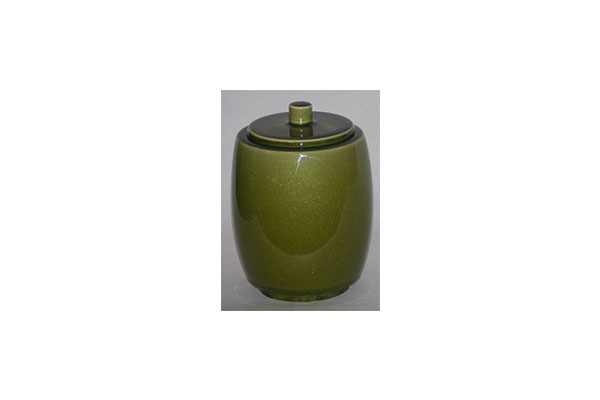 In a recent blog, we discussed Rookwood art pottery and the differences in commercial wares and decorated wares. As a follow up, we thought it would be beneficial to discuss what goes into valuing Rookwood commercial pottery. We'll consider, in this order, the condition, size, visual appeal, rarity and the age of the art pottery piece.
In a recent blog, we discussed Rookwood art pottery and the differences in commercial wares and decorated wares. As a follow up, we thought it would be beneficial to discuss what goes into valuing Rookwood commercial pottery. We'll consider, in this order, the condition, size, visual appeal, rarity and the age of the art pottery piece.
Because there are generally fewer variables that go into pricing Rookwood commercial pottery, it's often easier to understand than those factors that affect Rookwood decorated ware. The variables are more straight forward, in a sense. Let's start with the condition:
At best, the condition can be subjective. Sure, if a vase is damaged or repaired, that affects the value; however, the location of the damage plays a role, too. For instance, a chip along the rim of a vase can affect the price more adversely than say, a chip on the foot. Further, normal crazing doesn't affect the value as much as one might think and in fact, often doesn't lower it at all.
The size of the pieces also affects the price for Rookwood pottery. The larger the piece, odds are, the more valuable it becomes. Again, generally speaking, smaller pieces that measure between 3 and 5 inches with all other factors being equal will be priced lower than similar, larger examples. Much of Rookwood's production pottery was between 5 to 8 inches, so common pieces in that size range will typically bring average prices. Collectors should expect to pay a premium for larger pieces of Rookwood. Pieces in the 9 to 12 inch range are hard to find and production pieces larger than 13" are rare.
Visual appeal is another important factor. I've said it before: if it speaks to you and you're convinced the vase is exactly what's missing in your home, then within reason, its worth what you're willing to pay; however, other factors that go into the visual appeal include the sharpness or crispness of the mold and detail, its color and glaze as well as the basic form of the vase. Obviously the absence of visible damage will greatly affect the visual appeal of any piece of Rookwood pottery.
Is it rare? This is the fourth factor that plays into the value game. Its abundance or rarity will surely play a role in its value. Again, it's difficult to accurately quantify the availability or lack of any Rookwood piece. The fact is, no one ever knows if or when examples of rarely seen shape numbers will surface. However, if you have collected Rookwood for an extended period of time and a particular shape is one you haven't seen much of you are likely safe to assume you can pay more to add it to your collection.
Finally, the age of the Rookwood piece is factored in. Naturally, the older the piece, the more  valuable it becomes. For instance, those pieces made in the first two decades of the 1900s are considered premium, especially when measured against those made during the 1920s. Those made in the 1950s and most of the 1960s, although rarer due to lower production numbers, they're also considered lower quality and that brings the value down.
valuable it becomes. For instance, those pieces made in the first two decades of the 1900s are considered premium, especially when measured against those made during the 1920s. Those made in the 1950s and most of the 1960s, although rarer due to lower production numbers, they're also considered lower quality and that brings the value down.
Although it seems contradictory at times, there really is a method that's used; it's fickle at times, but the process itself is solid. Have a Rookwood commercial piece that you're having trouble valuing? Drop us a line and let us hear about it and if you'd like to read more about Rookwood art pottery history, visit our Rookwood page.



Hello,
I’m new to buying Rookwood pieces and I’ve come across a commercial mug from 1903. How rare are these pieces and what would be the value in today’s market?
The mug has crazing throughout, but no cracks, chips or repairs.
Thanks,
Keith
Hello,
I’m new to buying Rookwood pieces and I’ve come across a commercial mug from 1903. How rare are these pieces and what would be the value in today’s market?
The mug has crazing throughout, but no cracks, chips or repairs.
Thanks,
Keith